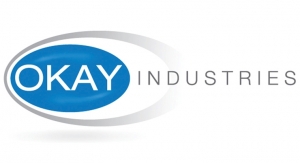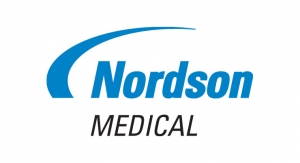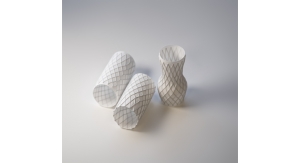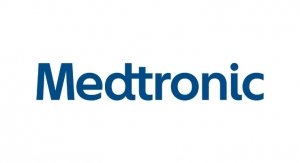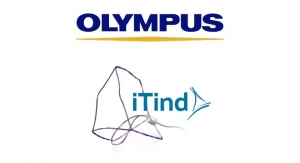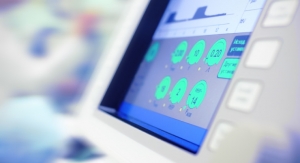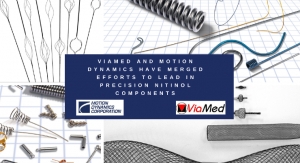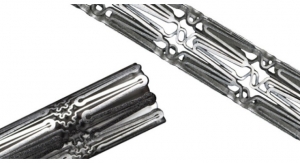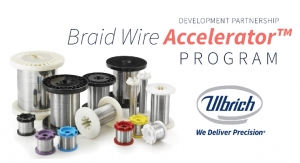Scott Gottlieb, M.D., Commissioner, U.S. Food and Drug Administration03.18.19
We’re in an unprecedented era of innovation in medical devices with advances in materials science that have led to technological breakthroughs such as the 3D printing of medical devices, continuous glucose monitoring patches for diabetes and miniaturized brain implants to treat epilepsy and Parkinson’s disease. Helping to ensure patients have access to safe medical devices that improve function and overall quality of life is a crucial part of the mission of the U.S. Food and Drug Administration. Our regulatory framework is designed to ensure that benefits patients receive from these devices are weighed against probable risks.
The vast majority of patients implanted with medical devices have no adverse reactions. The device works and performs as expected to treat medical conditions or help patients better manage their health. However, a growing body of evidence suggests that a small number of patients may have biological responses to certain types of materials in implantable or insertable devices. For example, they develop inflammatory reactions and tissue changes causing pain and other symptoms that may interfere with their quality of life.
Materials used in today’s medical devices vary as widely as the devices themselves—whether the material is metal, plastic, silicone, an animal-derived product or some combination of these. Because, in the case of implantable or insertable devices, these materials come into contact with tissue or other parts of the body for sometimes extended periods of time, we do a careful evaluation during our premarket review to determine if there is a potential adverse biological response resulting from contact of the device’s component materials with the body and whether the associated risks are unacceptable.
Specifically, we review information about the materials used in the composition of the device and require companies to include a biocompatibility evaluation or risk analysis, as well as clinical studies, when appropriate. In 2016, we finalized updated guidance for industry laying out what we look for in biocompatibility evaluations in order to ensure device manufacturers have adequately assessed the potential of their device to cause adverse biological responses in patients. By clarifying expectations for all devices requiring premarket submissions, we are helping to ensure that manufacturers are providing evidence that demonstrates that any risk to patient health or safety has been adequately evaluated prior to marketing.
These steps help to address any risks that may be posed by, for example, the potential presence of harmful chemicals or materials that might trigger allergic or other adverse reactions in some individuals. While such testing generally has been a reliable predictor of a material’s safety, we also recognize the importance of advancing the science we rely on to evaluate device materials and patient risk factors both before and after devices enter the market to assure we optimally reduce risks to patients and maximize benefits. Once a device is on the market we have a number of tools in place to monitor a device’s benefit-risk profile as it is used in a real-world setting. In cases where new information about safety or effectiveness becomes available, we can and have taken action to inform patients and health care providers about new risks or safety considerations and how to mitigate those risks. These actions include working with companies to recall and correct issues that arise postmarket, issuing safety communications or other updates for health care providers or patients about safe use of devices, requiring boxed warnings or contraindications be added to labeling, requiring postmarket studies, and up-classifying devices to allow us to regulate them more stringently, as we did with metal-on-metal total hip replacement devices. We are also working to fully implement the National Evaluation System for health Technology (NEST) that will link and synthesize data from different sources including clinical registries, electronic health records, and medical billing claims; this will help improve the quality of real-world evidence that will empower the FDA to more quickly identify, communicate and act on new or increased medical device safety concerns.
Our understanding of medical technologies evolves over time. As we learn more about long-term effects of materials and as materials science advances and new innovations become a reality, it’s imperative our regulation of devices evolves along with these advances to ensure patients are protected.
Prior to, and as part of, our April 2018 Medical Device Safety Action Plan, the FDA has been carefully evaluating the body of evidence on this issue. This includes current published studies and information submitted to us as reports in our public adverse events database or through data from postmarket studies that we required manufacturers to conduct. We also have our own team of FDA scientists and engineers conducting research to better understand device materials in our Center for Devices and Radiological Health’s (CDRH) Office of Science and Engineering Laboratories (OSEL).
Based on our evaluation and discussions with experts elsewhere in the government and academia, we believe the current evidence, although limited, suggests some individuals may be predisposed to develop an immune/inflammatory reaction when exposed to select materials.
The symptoms some patients experience may be limited to the region where the device is implanted or may be more generalized. Symptoms include but are not limited to fatigue, rash, joint, and muscle pain or weakness. Although uncommon and varied, these symptoms may share common underlying immune/inflammatory pathways and mimic more well-established inflammatory conditions.
In the small subsets of patients who have reported these symptoms, the symptoms may not develop for several years following implantation. As a result, they may not be detected even in larger and longer clinical studies. To date, these symptoms have not been reported with most materials used in medical devices, including most metals. Moreover, when reported, they have tended to be limited to small subsets of patients.
As an example, some patients, mostly with a history of pre-existing allergies, may develop allergic skin lesions with certain device use. This risk is usually identified by patch testing for potential device material-related allergens. However, not all device-related reactions are allergic in nature. Therefore, the utility of skin patch testing is limited.
Enhancing our collective understanding of materials science could lead to identifying materials that may cause an exaggerated response in sensitive individuals and advance the development of safer materials. Development of new tests to identify at-risk patients would help ensure they do not receive implantable devices that contain the material to which they are sensitive, therefore further enhancing patient safety and advance a precision medicine approach to the selection of device interventions.
It’s clear more work needs to be done.
To this end, we’re undertaking a broad effort to engage the public, scientists and industry stakeholders to gather information and help us determine the current state of the science, critical gaps in the existing science that need to be addressed, what approaches should be considered to further our understanding of medical device materials and improve the safety of devices for patients.
Breast Implants
Breast implants have a silicone outer shell, with either a textured or non-textured surface, and are filled with silicone gel or saline. The FDA has regularly communicated about risks associated with breast implants, such as capsular contracture, implant rupture and breast implant-associated anaplastic large cell lymphoma (BIA-ALCL). More confirmed cases of BIA-ALCL have been reported in patients with textured surface implants than in patients with smooth-surface breast implants. We’ve also heard from patients who are concerned that their implants may be connected to other health conditions that could be associated with their immune system’s response to these devices, resulting in symptoms like chronic fatigue, cognitive issues, and muscle pain. While the FDA doesn’t have definitive evidence suggesting breast implants are associated with these conditions, we’re looking to gain a fuller understanding of this issue to communicate risk, minimize harm and help in the treatment of affected patients. This topic will be discussed at our upcoming two-day public meeting of the General and Plastic Surgery Devices Panel on March 25 and 26 and will be informed by our ongoing assessment of the long-term health effects of various materials.
In addition, we’ve been coordinating on two different breast implant registries to learn more about how these devices perform and interact with the body’s tissues at the cellular and organ levels. For instance, we worked with the American Society of Plastic Surgeons/the Plastic Surgery Foundation to develop the Patient Registry and Outcomes for Breast Implants and Anaplastic Large Cell Lymphoma Etiology and Epidemiology. This registry collects real-world data regarding patients who have a confirmed diagnosis of BIA-ALCL. The data collected from this registry as well as from medical device reports submitted to the FDA, medical literature and meetings with patient advocates have contributed to our understanding of BIA-ALCL and our communication updates to the public regarding BIA-ALCL. Additionally, we’re working with multiple stakeholders to advance the development of the National Breast Implant Registry to provide a platform for evaluating real-world data on the safety and performance of breast implants. This will help us better evaluate data from providers regarding their patients with breast implants.
We’ll continue to report on significant findings as new information and analyses become available and if any of these findings prompt the agency to issue new recommendations or policies to mitigate risks.
Metals in Devices
Metal device implants have been used in patients for more than a century, beginning with bone- stabilizing plates to heal fractures and advancing to state-of-the-art stents, prostheses, and implantable defibrillators. Many implants are meant to remain in a patient’s body for years or even a lifetime. During this time, we know that tiny amounts of metals may be gradually released into the bloodstream and surrounding tissues.
The FDA regularly conducts thorough reviews of the latest scientific evidence. We continue to find that most patients experience no adverse health effects from these metals interacting either locally where the devices are implanted or systemically throughout the body. However, after carefully reviewing the current scientific literature, reports in our public adverse event database as well as findings from post-approval and postmarket surveillance studies, we believe there’s a need to evaluate through a comprehensive process concerns that were brought to light with particular devices, such as metal-on-metal total hip replacement devices and the permanent birth control implant Essure, a coiled wire that’s composed of multiple metals, including nitinol (a nickel and titanium alloy) and stainless steel, and is inserted into a woman’s fallopian tubes.
Nitinol in Devices
Last December, we announced a revised protocol for the postmarket surveillance study of the Essure device to, in part, better understand how the materials in the device interact with the body’s immune system. The FDA worked with Bayer, the manufacturer of the device, to make sure the company implemented several approved modifications to the study that we believe will strengthen the evidence collected.
First and foremost, women in the study will be followed for five years, rather than the three years that were initially required. This extension will provide us with longer-term information on adverse risks of the device, including issues that may lead women to have the device removed. We also required additional blood testing of patients enrolled in follow-up visits during the study to learn more about patients’ levels of certain inflammatory markers that can be indicators of increased inflammation. This could help us better evaluate potential immune reactions to the device and define whether these findings are associated with symptoms that patients have reported in relation to Essure. These reported symptoms include persistent pain and hypersensitivity reactions, headaches, fatigue, and cognitive difficulties.
The use of nitinol in other devices has increased—particularly for cardiovascular stents, guidewires and other devices used in minimally-invasive medical procedures. This owes to the metal’s properties. Nitinol is flexible and bendable with the ability to spring back, like a Slinky, into its original shape.
Many of the symptoms reported by some patients who had Essure implanted have not been reported by patients who had other nitinol-containing devices implanted, which could be related to the location of the implants. The particular site in the body where a device is placed may contribute to the potential for the device to cause an immune/inflammatory reaction. In the next few months, we’re planning to publish draft guidance on the use of nitinol in medical devices. This new guidance will include recommendations from the FDA on what manufacturers should include in their premarket submission of a device containing nitinol, including technical testing recommendations, labeling, and information on how the device is manufactured and other factors that could affect the breakdown of the material in the body.
Metal-on-Metal Total Hip Replacement Devices
Three years ago, the FDA strengthened the regulation of metal-on-metal total hip replacement devices requiring that manufacturers submit premarket approval applications to keep their devices on the market. That decision was based on significant safety concerns associated with adverse biological reactions to the metal wear particles and ions generated by the metal ball rubbing the metal socket joint during everyday use. These metal particles were found to have the potential to cause damage to the surrounding bones and soft tissues (including muscle) in some patients leading to pain, device failure and the need for repeat surgery to replace the implant. Some patients also developed severe systemic conditions, including damage to their heart, kidneys, and thyroid, from the metal ions entering their bloodstream and reaching distant organs.
There are currently no FDA-approved metal-on-metal total hip replacement devices marketed for use in the U.S. However, many patients still have these devices implanted in their body, and the FDA felt it was imperative that manufacturers continue to meet their obligations for completing their postmarket surveillance studies. Today, we’re sharing interim results from these studies. The results show significantly higher blood levels of metal ions (cobalt and chromium) in patients with metal-on-metal hip implants compared to those without metal implants. While that’s not unanticipated, the data also suggest that the standard blood level threshold measurement of 7.0 parts per billion (micrograms/liter) or higher for metal ions, is not optimal to determine if an implant is functioning safely. Some patients in the postmarket surveillance studies had levels higher than this with no adverse medical complications, while others had severe symptoms with lower ion levels in their blood. This suggests that there are additional factors, besides metal ion levels, that affect which patients experience adverse events from metal-on-metal total hip replacement devices.
In addition to the clinical evaluations, the postmarket surveillance studies included a detailed analysis of more than 2,000 devices from patients who elected to have their implants removed. On average, patients who had their devices removed had higher metal ion levels compared to other patients in the postmarket surveillance studies who didn’t. Also, the wear between the metal ball and metal socket was found to be higher than what was expected based on testing performed on the devices before they were allowed on the market. When considering all devices that were explanted, it appears that certain factors, including those related to the design or surgical placement of the device, may be associated with a higher wearing down of the device and elevated metal ion levels.
Based on these findings, the FDA is working with standards development organizations (such as the American Society for Testing and Materials) to develop new standards to improve how metal-on-metal total hip replacement devices are evaluated and identify additional testing protocols for new metal-on-metal devices that are submitted to the FDA for review.
Advisory Panel Meeting
To help us gain a broader understanding of nitinol and other metals in devices, we’re announcing today that we plan to hold an advisory committee meeting this fall to discuss metal implants and the potential risk for certain patients to have “hypersensitivity” or exaggerated immune and inflammatory reactions to these metals. We’ve been exploring the link between immune and inflammatory markers and symptoms such as pain, headaches, and fatigue in patients who have these devices implanted. This advisory committee meeting is part of our ongoing effort to advance the evaluation of materials used in implantable devices.
The panel meeting will engage experts in the field to provide input on what relevant scientific information the FDA should solicit from manufacturers to be considered in both premarket review and postmarket surveillance. Importantly, we’d like to determine how to identify patients who might be at increased risk of having a hypersensitivity response before they receive a metal implant, so they can consider those risks along with the device’s benefits. An additional purpose of the meeting will be to identify gaps in current scientific knowledge to determine what studies are essential to further expand our understanding of this important public health issue, including to what extent immune/inflammatory responses to certain metals contribute to device-related adverse events and steps we can take to mitigate potential risks.
Prior to this meeting, the FDA will release a peer-reviewed white paper that summarizes the current scientific knowledge regarding different aspects of metal implants, including how the structure and function of these devices are impacted by the body’s tissues, muscles, and blood supply and how the metal components dissolve and interact with immune cells.
These efforts are just a few aspects of our ongoing evaluation of the effects of materials in at-risk patients. Our goal in taking these steps is to ensure that the benefits of devices made of metal materials continue to outweigh their risks. For the vast majority of patients, this is the case and will remain the case as we go through these steps. However, for certain small subsets of patients who exhibit sensitivities to select materials, we must determine what additional actions we should take to make sure they are protected and understand the unique risks they may encounter.
Animal Materials in Devices
We’re also making efforts to improve the safety of devices made from animal-derived materials such as additives used on device coatings or heart valves made from pig tissue. We know that animal-derived materials may provide benefits over metal or synthetic materials because they can more closely match the biophysical properties of tissues within the human body. But these materials may carry a risk of transmitting infectious disease when improperly collected, stored, or manufactured. Specifically, animal tissues can contain infectious agents known as prions, which cause neurodegenerative disorders such as Bovine Spongiform Encephalopathy (BSE) or Mad Cow Disease. Yesterday, we issued final guidance on Medical Devices Containing Materials Derived from Animal Sources to provide recommendations to device manufacturers for how to minimize the potential risk of transmitting these rare but serious infectious diseases while still providing patients access to beneficial devices made from animal-derived materials.
Research Efforts to Better Understand Innovative Materials
We’re also beginning to see manufacturers incorporate new types of materials in devices. CDRH’s OSEL has been conducting a wide array of research studies to learn more about the new advances in device materials. For example, our scientists are looking to better understand and characterize an innovative form of carbon called graphene, which has enormous applications in biotechnology and device development because it is lightweight, flexible, a superb conductor of electricity and is many times stronger than steel.
In anticipation of new device applications for, say, graphene-containing drug delivery systems or ultrasensitive biosensors that can be used with diagnostic tests, our scientists are working quickly to characterize and learn more about graphene’s chemical properties—both in terms of how durable it will be in medical devices and how it will interact with the body’s tissues and immune system.
OSEL has also worked on understanding how nanoparticles—tiny particles composed of just a few atoms—in medical devices interact with the immune system and whether they’re causing any toxic effects in the body. While these advances are promising, OSEL researchers are working to ensure that the benefits of the new material outweigh any risks that may come from these particles interacting with human cells.
Next Steps
Modernizing the regulatory framework pertaining to the FDA’s review of medical device materials requires a multi-step approach. We’ll gather input from patients, device manufacturers, researchers, and physicians to learn more about their concerns and ideas for how the FDA should proceed. Any new initiatives we implement must be rooted in putting patient safety first and based on sound science.
More closely evaluating the potential for certain materials to cause immune/inflammatory reactions in a small number of patients may improve our understanding of materials, help uncover ways to identify patients predisposed to these reactions and improve the overall safety and performance of medical devices. This is part of our continuing effort to advance opportunities for enabling modern materials to improve the performance of medical devices while also advancing our assurance of safety for these products. We look forward to providing updates about our progress and ongoing research. We believe our continuing efforts will ultimately provide patients and doctors with better access to more effective and safer medical devices.
The vast majority of patients implanted with medical devices have no adverse reactions. The device works and performs as expected to treat medical conditions or help patients better manage their health. However, a growing body of evidence suggests that a small number of patients may have biological responses to certain types of materials in implantable or insertable devices. For example, they develop inflammatory reactions and tissue changes causing pain and other symptoms that may interfere with their quality of life.
Materials used in today’s medical devices vary as widely as the devices themselves—whether the material is metal, plastic, silicone, an animal-derived product or some combination of these. Because, in the case of implantable or insertable devices, these materials come into contact with tissue or other parts of the body for sometimes extended periods of time, we do a careful evaluation during our premarket review to determine if there is a potential adverse biological response resulting from contact of the device’s component materials with the body and whether the associated risks are unacceptable.
Specifically, we review information about the materials used in the composition of the device and require companies to include a biocompatibility evaluation or risk analysis, as well as clinical studies, when appropriate. In 2016, we finalized updated guidance for industry laying out what we look for in biocompatibility evaluations in order to ensure device manufacturers have adequately assessed the potential of their device to cause adverse biological responses in patients. By clarifying expectations for all devices requiring premarket submissions, we are helping to ensure that manufacturers are providing evidence that demonstrates that any risk to patient health or safety has been adequately evaluated prior to marketing.
These steps help to address any risks that may be posed by, for example, the potential presence of harmful chemicals or materials that might trigger allergic or other adverse reactions in some individuals. While such testing generally has been a reliable predictor of a material’s safety, we also recognize the importance of advancing the science we rely on to evaluate device materials and patient risk factors both before and after devices enter the market to assure we optimally reduce risks to patients and maximize benefits. Once a device is on the market we have a number of tools in place to monitor a device’s benefit-risk profile as it is used in a real-world setting. In cases where new information about safety or effectiveness becomes available, we can and have taken action to inform patients and health care providers about new risks or safety considerations and how to mitigate those risks. These actions include working with companies to recall and correct issues that arise postmarket, issuing safety communications or other updates for health care providers or patients about safe use of devices, requiring boxed warnings or contraindications be added to labeling, requiring postmarket studies, and up-classifying devices to allow us to regulate them more stringently, as we did with metal-on-metal total hip replacement devices. We are also working to fully implement the National Evaluation System for health Technology (NEST) that will link and synthesize data from different sources including clinical registries, electronic health records, and medical billing claims; this will help improve the quality of real-world evidence that will empower the FDA to more quickly identify, communicate and act on new or increased medical device safety concerns.
Our understanding of medical technologies evolves over time. As we learn more about long-term effects of materials and as materials science advances and new innovations become a reality, it’s imperative our regulation of devices evolves along with these advances to ensure patients are protected.
Prior to, and as part of, our April 2018 Medical Device Safety Action Plan, the FDA has been carefully evaluating the body of evidence on this issue. This includes current published studies and information submitted to us as reports in our public adverse events database or through data from postmarket studies that we required manufacturers to conduct. We also have our own team of FDA scientists and engineers conducting research to better understand device materials in our Center for Devices and Radiological Health’s (CDRH) Office of Science and Engineering Laboratories (OSEL).
Based on our evaluation and discussions with experts elsewhere in the government and academia, we believe the current evidence, although limited, suggests some individuals may be predisposed to develop an immune/inflammatory reaction when exposed to select materials.
The symptoms some patients experience may be limited to the region where the device is implanted or may be more generalized. Symptoms include but are not limited to fatigue, rash, joint, and muscle pain or weakness. Although uncommon and varied, these symptoms may share common underlying immune/inflammatory pathways and mimic more well-established inflammatory conditions.
In the small subsets of patients who have reported these symptoms, the symptoms may not develop for several years following implantation. As a result, they may not be detected even in larger and longer clinical studies. To date, these symptoms have not been reported with most materials used in medical devices, including most metals. Moreover, when reported, they have tended to be limited to small subsets of patients.
As an example, some patients, mostly with a history of pre-existing allergies, may develop allergic skin lesions with certain device use. This risk is usually identified by patch testing for potential device material-related allergens. However, not all device-related reactions are allergic in nature. Therefore, the utility of skin patch testing is limited.
Enhancing our collective understanding of materials science could lead to identifying materials that may cause an exaggerated response in sensitive individuals and advance the development of safer materials. Development of new tests to identify at-risk patients would help ensure they do not receive implantable devices that contain the material to which they are sensitive, therefore further enhancing patient safety and advance a precision medicine approach to the selection of device interventions.
It’s clear more work needs to be done.
To this end, we’re undertaking a broad effort to engage the public, scientists and industry stakeholders to gather information and help us determine the current state of the science, critical gaps in the existing science that need to be addressed, what approaches should be considered to further our understanding of medical device materials and improve the safety of devices for patients.
Breast Implants
Breast implants have a silicone outer shell, with either a textured or non-textured surface, and are filled with silicone gel or saline. The FDA has regularly communicated about risks associated with breast implants, such as capsular contracture, implant rupture and breast implant-associated anaplastic large cell lymphoma (BIA-ALCL). More confirmed cases of BIA-ALCL have been reported in patients with textured surface implants than in patients with smooth-surface breast implants. We’ve also heard from patients who are concerned that their implants may be connected to other health conditions that could be associated with their immune system’s response to these devices, resulting in symptoms like chronic fatigue, cognitive issues, and muscle pain. While the FDA doesn’t have definitive evidence suggesting breast implants are associated with these conditions, we’re looking to gain a fuller understanding of this issue to communicate risk, minimize harm and help in the treatment of affected patients. This topic will be discussed at our upcoming two-day public meeting of the General and Plastic Surgery Devices Panel on March 25 and 26 and will be informed by our ongoing assessment of the long-term health effects of various materials.
In addition, we’ve been coordinating on two different breast implant registries to learn more about how these devices perform and interact with the body’s tissues at the cellular and organ levels. For instance, we worked with the American Society of Plastic Surgeons/the Plastic Surgery Foundation to develop the Patient Registry and Outcomes for Breast Implants and Anaplastic Large Cell Lymphoma Etiology and Epidemiology. This registry collects real-world data regarding patients who have a confirmed diagnosis of BIA-ALCL. The data collected from this registry as well as from medical device reports submitted to the FDA, medical literature and meetings with patient advocates have contributed to our understanding of BIA-ALCL and our communication updates to the public regarding BIA-ALCL. Additionally, we’re working with multiple stakeholders to advance the development of the National Breast Implant Registry to provide a platform for evaluating real-world data on the safety and performance of breast implants. This will help us better evaluate data from providers regarding their patients with breast implants.
We’ll continue to report on significant findings as new information and analyses become available and if any of these findings prompt the agency to issue new recommendations or policies to mitigate risks.
Metals in Devices
Metal device implants have been used in patients for more than a century, beginning with bone- stabilizing plates to heal fractures and advancing to state-of-the-art stents, prostheses, and implantable defibrillators. Many implants are meant to remain in a patient’s body for years or even a lifetime. During this time, we know that tiny amounts of metals may be gradually released into the bloodstream and surrounding tissues.
The FDA regularly conducts thorough reviews of the latest scientific evidence. We continue to find that most patients experience no adverse health effects from these metals interacting either locally where the devices are implanted or systemically throughout the body. However, after carefully reviewing the current scientific literature, reports in our public adverse event database as well as findings from post-approval and postmarket surveillance studies, we believe there’s a need to evaluate through a comprehensive process concerns that were brought to light with particular devices, such as metal-on-metal total hip replacement devices and the permanent birth control implant Essure, a coiled wire that’s composed of multiple metals, including nitinol (a nickel and titanium alloy) and stainless steel, and is inserted into a woman’s fallopian tubes.
Nitinol in Devices
Last December, we announced a revised protocol for the postmarket surveillance study of the Essure device to, in part, better understand how the materials in the device interact with the body’s immune system. The FDA worked with Bayer, the manufacturer of the device, to make sure the company implemented several approved modifications to the study that we believe will strengthen the evidence collected.
First and foremost, women in the study will be followed for five years, rather than the three years that were initially required. This extension will provide us with longer-term information on adverse risks of the device, including issues that may lead women to have the device removed. We also required additional blood testing of patients enrolled in follow-up visits during the study to learn more about patients’ levels of certain inflammatory markers that can be indicators of increased inflammation. This could help us better evaluate potential immune reactions to the device and define whether these findings are associated with symptoms that patients have reported in relation to Essure. These reported symptoms include persistent pain and hypersensitivity reactions, headaches, fatigue, and cognitive difficulties.
The use of nitinol in other devices has increased—particularly for cardiovascular stents, guidewires and other devices used in minimally-invasive medical procedures. This owes to the metal’s properties. Nitinol is flexible and bendable with the ability to spring back, like a Slinky, into its original shape.
Many of the symptoms reported by some patients who had Essure implanted have not been reported by patients who had other nitinol-containing devices implanted, which could be related to the location of the implants. The particular site in the body where a device is placed may contribute to the potential for the device to cause an immune/inflammatory reaction. In the next few months, we’re planning to publish draft guidance on the use of nitinol in medical devices. This new guidance will include recommendations from the FDA on what manufacturers should include in their premarket submission of a device containing nitinol, including technical testing recommendations, labeling, and information on how the device is manufactured and other factors that could affect the breakdown of the material in the body.
Metal-on-Metal Total Hip Replacement Devices
Three years ago, the FDA strengthened the regulation of metal-on-metal total hip replacement devices requiring that manufacturers submit premarket approval applications to keep their devices on the market. That decision was based on significant safety concerns associated with adverse biological reactions to the metal wear particles and ions generated by the metal ball rubbing the metal socket joint during everyday use. These metal particles were found to have the potential to cause damage to the surrounding bones and soft tissues (including muscle) in some patients leading to pain, device failure and the need for repeat surgery to replace the implant. Some patients also developed severe systemic conditions, including damage to their heart, kidneys, and thyroid, from the metal ions entering their bloodstream and reaching distant organs.
There are currently no FDA-approved metal-on-metal total hip replacement devices marketed for use in the U.S. However, many patients still have these devices implanted in their body, and the FDA felt it was imperative that manufacturers continue to meet their obligations for completing their postmarket surveillance studies. Today, we’re sharing interim results from these studies. The results show significantly higher blood levels of metal ions (cobalt and chromium) in patients with metal-on-metal hip implants compared to those without metal implants. While that’s not unanticipated, the data also suggest that the standard blood level threshold measurement of 7.0 parts per billion (micrograms/liter) or higher for metal ions, is not optimal to determine if an implant is functioning safely. Some patients in the postmarket surveillance studies had levels higher than this with no adverse medical complications, while others had severe symptoms with lower ion levels in their blood. This suggests that there are additional factors, besides metal ion levels, that affect which patients experience adverse events from metal-on-metal total hip replacement devices.
In addition to the clinical evaluations, the postmarket surveillance studies included a detailed analysis of more than 2,000 devices from patients who elected to have their implants removed. On average, patients who had their devices removed had higher metal ion levels compared to other patients in the postmarket surveillance studies who didn’t. Also, the wear between the metal ball and metal socket was found to be higher than what was expected based on testing performed on the devices before they were allowed on the market. When considering all devices that were explanted, it appears that certain factors, including those related to the design or surgical placement of the device, may be associated with a higher wearing down of the device and elevated metal ion levels.
Based on these findings, the FDA is working with standards development organizations (such as the American Society for Testing and Materials) to develop new standards to improve how metal-on-metal total hip replacement devices are evaluated and identify additional testing protocols for new metal-on-metal devices that are submitted to the FDA for review.
Advisory Panel Meeting
To help us gain a broader understanding of nitinol and other metals in devices, we’re announcing today that we plan to hold an advisory committee meeting this fall to discuss metal implants and the potential risk for certain patients to have “hypersensitivity” or exaggerated immune and inflammatory reactions to these metals. We’ve been exploring the link between immune and inflammatory markers and symptoms such as pain, headaches, and fatigue in patients who have these devices implanted. This advisory committee meeting is part of our ongoing effort to advance the evaluation of materials used in implantable devices.
The panel meeting will engage experts in the field to provide input on what relevant scientific information the FDA should solicit from manufacturers to be considered in both premarket review and postmarket surveillance. Importantly, we’d like to determine how to identify patients who might be at increased risk of having a hypersensitivity response before they receive a metal implant, so they can consider those risks along with the device’s benefits. An additional purpose of the meeting will be to identify gaps in current scientific knowledge to determine what studies are essential to further expand our understanding of this important public health issue, including to what extent immune/inflammatory responses to certain metals contribute to device-related adverse events and steps we can take to mitigate potential risks.
Prior to this meeting, the FDA will release a peer-reviewed white paper that summarizes the current scientific knowledge regarding different aspects of metal implants, including how the structure and function of these devices are impacted by the body’s tissues, muscles, and blood supply and how the metal components dissolve and interact with immune cells.
These efforts are just a few aspects of our ongoing evaluation of the effects of materials in at-risk patients. Our goal in taking these steps is to ensure that the benefits of devices made of metal materials continue to outweigh their risks. For the vast majority of patients, this is the case and will remain the case as we go through these steps. However, for certain small subsets of patients who exhibit sensitivities to select materials, we must determine what additional actions we should take to make sure they are protected and understand the unique risks they may encounter.
Animal Materials in Devices
We’re also making efforts to improve the safety of devices made from animal-derived materials such as additives used on device coatings or heart valves made from pig tissue. We know that animal-derived materials may provide benefits over metal or synthetic materials because they can more closely match the biophysical properties of tissues within the human body. But these materials may carry a risk of transmitting infectious disease when improperly collected, stored, or manufactured. Specifically, animal tissues can contain infectious agents known as prions, which cause neurodegenerative disorders such as Bovine Spongiform Encephalopathy (BSE) or Mad Cow Disease. Yesterday, we issued final guidance on Medical Devices Containing Materials Derived from Animal Sources to provide recommendations to device manufacturers for how to minimize the potential risk of transmitting these rare but serious infectious diseases while still providing patients access to beneficial devices made from animal-derived materials.
Research Efforts to Better Understand Innovative Materials
We’re also beginning to see manufacturers incorporate new types of materials in devices. CDRH’s OSEL has been conducting a wide array of research studies to learn more about the new advances in device materials. For example, our scientists are looking to better understand and characterize an innovative form of carbon called graphene, which has enormous applications in biotechnology and device development because it is lightweight, flexible, a superb conductor of electricity and is many times stronger than steel.
In anticipation of new device applications for, say, graphene-containing drug delivery systems or ultrasensitive biosensors that can be used with diagnostic tests, our scientists are working quickly to characterize and learn more about graphene’s chemical properties—both in terms of how durable it will be in medical devices and how it will interact with the body’s tissues and immune system.
OSEL has also worked on understanding how nanoparticles—tiny particles composed of just a few atoms—in medical devices interact with the immune system and whether they’re causing any toxic effects in the body. While these advances are promising, OSEL researchers are working to ensure that the benefits of the new material outweigh any risks that may come from these particles interacting with human cells.
Next Steps
Modernizing the regulatory framework pertaining to the FDA’s review of medical device materials requires a multi-step approach. We’ll gather input from patients, device manufacturers, researchers, and physicians to learn more about their concerns and ideas for how the FDA should proceed. Any new initiatives we implement must be rooted in putting patient safety first and based on sound science.
More closely evaluating the potential for certain materials to cause immune/inflammatory reactions in a small number of patients may improve our understanding of materials, help uncover ways to identify patients predisposed to these reactions and improve the overall safety and performance of medical devices. This is part of our continuing effort to advance opportunities for enabling modern materials to improve the performance of medical devices while also advancing our assurance of safety for these products. We look forward to providing updates about our progress and ongoing research. We believe our continuing efforts will ultimately provide patients and doctors with better access to more effective and safer medical devices.

